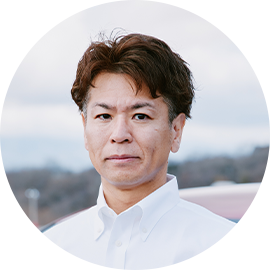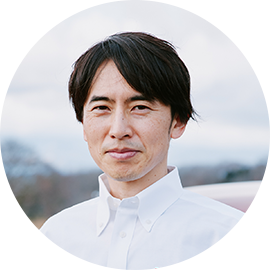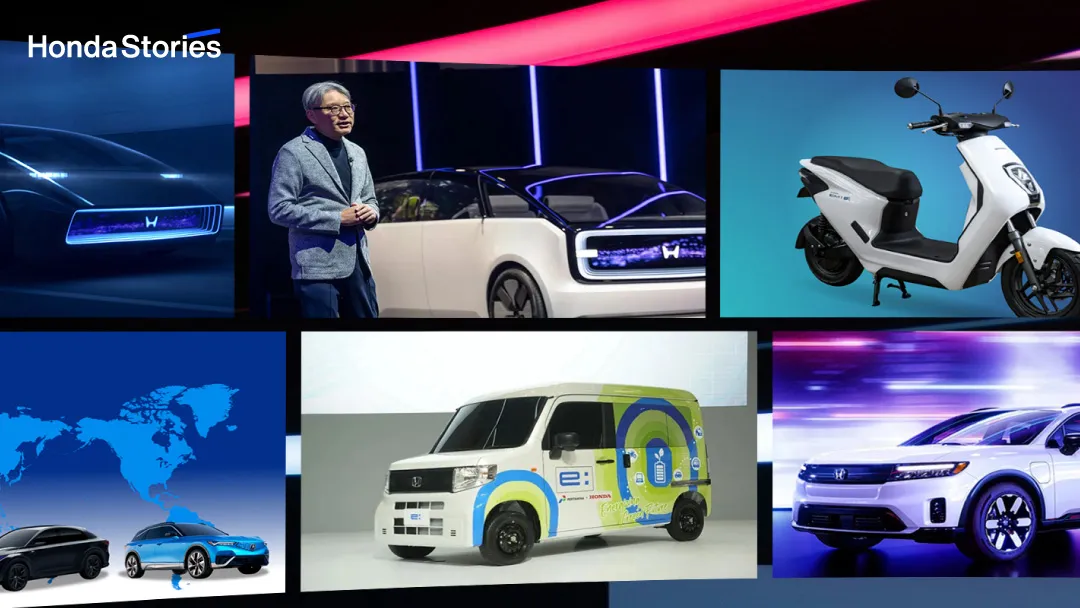Products
Did the New Accord Envision a “Wide Balance Beam” in Gymnastics? What Is the Uniqueness of Honda that it Aims to Convey to the World with e:HEV?

In spring 2024, the new ACCORD debuts in Japan. Further refining the hybrid system “e:HEV” to balance high environmental performance with the joy of maneuvering, it aims to redefine the value of sedan models. The ACCORD, one of Honda’s flagship models, and its heart, the e:HEV. We interviewed each development leader to hear about the pressures they faced and their thoughts on the development process.

Development Leader for ACCORD View More Close Naoki Yokoyama
Read More
Development Leader for e:HEV View More Close Takahiro Sasaki
Read MoreThe image is “balance beam used in gymnastics”? The goal was a car with latitude and resilience.
Yokoyama-san, the development leader for the ACCORD, and Sasaki-san, the development leader for e:HEV. Could you please share your thoughts of when you were assigned as Development Leader?

In my case, I’ve been part of the team since the development of the precursor to Honda’s original hybrid system, “SPORT HYBRID i-MMD*”, began. I’ve experienced the challenges at the start and various developments along the way, so witnessing this hybrid system finally reaching this level has been a journey I’ve been involved in for a long time. So, of course, there was pressure, but more than that, I felt a strong desire to advance in an enjoyable manner with the development team.
* Intelligent Multi-Mode Drive
 From left to right, Takahiro Sasaki, the development leader for e:HEV, and Naoki Yokoyama, the development leader for the new ACCORD
From left to right, Takahiro Sasaki, the development leader for e:HEV, and Naoki Yokoyama, the development leader for the new ACCORD
What kind of car were you imagining when developing the new ACCORD?

The beginning of the development was purely with the sincere desire to create a good car. From there, we delved into the concept of what would constitute a “good car” worthy of the ACCORD, and as a result, we arrived at a car that provides a sense of “latitude” and “resilience” in everyday use. For example, we thought that if a car not only provides comfortable transportation for commuting or leisure activities but also allows people to feel relaxed, clear-minded, and have such experiences, they would think, “This is a good car” or “I’m glad I chose this car”. We aimed to create a car that would energize customers even during their regular commutes and make their activities at their destination more fulfilling, aiming for such a “good car”. To give a more specific example... you know the “balance beam”?
Is that the balance beam in gymnastics?

Yes. Our development team conceptualized the idea with the image of “a wide balance beam” in mind and aligned our development trajectory accordingly. A typical balance beam is only 10 centimeters wide, right? So only a limited number of people can perform on it, and most people would fall off. Don’t you think that if the width were wider, more people would feel a sense of security and be able to perform freely on it?
I think it’s possible to apply the same thought to cars. While driving, if the controls installed in the car naturally support the driver’s driving abilities, the vehicle can be driven with peace of mind and composure. We aimed to create a car that serves as a companion with such resilience for as many customers as possible. I also believe that the ACCORD has the mission of showcasing Honda’s technological prowess both domestically and internationally. I wanted to convey that evolution of performance and Honda’s technological prowess to customers through driving.

The joy of maneuvering and the luxurious, exhilarating driving experience pursued with the Sports e:HEV.
The new ACCORD is promoting itself with the term “Sports e:HEV”, emphasizing the “joy of driving”. What drove you to pursue such values with e:HEV?

The catalyst was the market’s evaluation of the driving experience. The two-motor hybrid system, introduced since the predecessor ACCORD in 2013, boasted quick response and excellent noise reduction at low speeds alongside its high level of environmental performance. However, when strenuous acceleration is demanded, the engine rpm rises, affecting the quietness. If only such scenes are highlighted, it affects the overall evaluation of the driving performance, which is very frustrating for the development team.
From there, with a strong desire to have the value of driving properly acknowledged, we aimed for a luxurious and exhilarating driving experience by enhancing the quietness, which is a strength of e:HEV, while also seeking to stimulate the senses with exhilarating driving when accelerating. In line with this concept, we revamped the powertrain to achieve a rhythmic and exhilarating operation by expanding the high-efficiency range of the engine and synergizing it with a high-output generator, thus avoiding deteriorated fuel efficiency even during strong acceleration.
Furthermore, by optimizing the gear ratio through structural changes and strengthening battery assistance, we expanded the engine’s direct connection range, further enhancing quietness. Finally, we feel that we have achieved the “joy of driving” that we have been pursuing with this powertrain.
 Left side shows the conventional e:HEV, while the right side features the latest e:HEV installed in the new ACCORD. Optimizing the gear ratio, which was difficult with the conventional structure, has become possible. Furthermore, the new generator maximizes the potential of the direct injection engine.
Left side shows the conventional e:HEV, while the right side features the latest e:HEV installed in the new ACCORD. Optimizing the gear ratio, which was difficult with the conventional structure, has become possible. Furthermore, the new generator maximizes the potential of the direct injection engine.

Listening to both of your stories, it feels like the development of the new ACCORD was achieved through mutual recognition and alignment of vision, which enabled you to work together diligently. How do you view each other’s responsibilities in your respective areas of work?

I also come from a powertrain development background, so I believe I understand both the enjoyment and challenges of that development process quite well. I think powertrain development comes with various constraints, but if you have ideas, the possibilities for control are endless. In the domain of powertrains, which can be considered the heart of the car, we aim to pursue Honda’s essence and provide indispensable elements for products that will carry Honda’s future. I believed that within that entire process, we could together create the best powertrain for the new ACCORD.
What about you, Sasaki-san?

The Development Leader is in a very challenging position, like a chef who skillfully blends various technologies and materials to create one car. Their role requires a different perspective from functional development. In that regard, Yokoyama-san had a clear vision and placed great emphasis on communicating it clearly to the development team and aligning the development trajectory. This made it easier to propose various ideas from the functional side, which ultimately contributed to the birth of the new ACCORD.

Advanced sale in North America. What were the overseas reactions like?
How is the reception in North America, where it has already been launched ahead of Japan?

For the Dynamics performance, both local journalists and customers have given high praise, feeling a solid advantage over its predecessor and competitors. Regarding sales, there’s a goal set to achieve a 50% hybrid sales ratio in North America due to CAFE* regulations. The ACCORD plays an important role in achieving this goal. This goal was quite challenging considering the sales ratio of the previous model, but we were able to achieve it. I believe it also proves we were able to develop such a strong powertrain.
* CAFE:Corporate Average Fuel Economy
 The new model ACCORD for the Japanese market, scheduled to be released in the spring of 2024
The new model ACCORD for the Japanese market, scheduled to be released in the spring of 2024
 The new model ACCORD to be released in Japan this time will include features that were not included in the North American specifications, such as “Honda SENSING 360” advanced driver-assistance system (ADAS), visor-less meter, and Experience Selection Dial. In addition, Google is also integrated, and only the Japanese specifications can be equipped with these features in combination.
The new model ACCORD to be released in Japan this time will include features that were not included in the North American specifications, such as “Honda SENSING 360” advanced driver-assistance system (ADAS), visor-less meter, and Experience Selection Dial. In addition, Google is also integrated, and only the Japanese specifications can be equipped with these features in combination.
Please tell us about the dream that each of you wants to fulfill.

Hybrid technology was originally developed with the aim of improving fuel efficiency. In the early days of hybrid vehicles, while they were fuel-efficient, there were situations where compromises had to be made in terms of performance. However, with the new ACCORD, we revamped the hardware components such as the engine, drive unit, and battery, and coupled that with advancements in control technology to maximize their utilization. This enabled us to achieve a luxurious and exhilarating driving experience without compromising fuel efficiency. The balance between fuel efficiency and performance is something that can only be achieved with hybrid vehicles, and we take pride in having developed a powertrain which is highly competitive.
I’ve been dreaming of realizing the powertrain that I idealize, and finally, that dream has come true. Next, I want to further evolve this technology and compete with BEVs/FCVs by realizing the joy of maneuvering unique to hybrid vehicles, which are clean and environmentally friendly. By doing so, I hope to increase options for customers and expand the Honda user base worldwide. By continuously providing attractive mobility through multi-pathways*, I aim to eliminate constraints on customers’ movement and enrich their experiences in new places. As a result, I believe that if everyone smiles, my work becomes extremely valuable. I want to continue maximizing the value we provide, always in line with the times, without cutting corners.
* The concept of exploring the potential of technology in all directions to achieve the highest energy efficiency possible, and aiming for a carbon-free society through multiple routes.

During my university days, I was researching the engine. From the desire to change the way combustion occurs and reduce environmental impact, I thought of Honda when it comes to engines and decided to join the company. After joining the company, I was able to work on the development of Honda’s first direct injection system, which improved environmental performance, and thus achieved my first dream. Afterward, I began to aspire to create cars that are enjoyable and comfortable to drive while still maintaining environmental performance. With the development of the new ACCORD, I feel that my second dream has come true.
And what I feel has changed within myself is that while I initially loved engines and joined Honda because of that, I’ve come to think that maybe any powertrain is fine, to be honest. What matters most is whether the car embodies the essence of Honda. My next dream is to plan and develop mobility solutions that offer enjoyment, comfort, and a sense of newness while also pursuing environmental performance. It would be amazing if customers were pleased with that.

Original article issued on March 8, 2024
<Related Articles>










At first, honestly, it was nothing but pressure (laughs). The ACCORD is one of Honda’s flagship models and holds an important position where failure is not tolerated. It was indeed a great honor to be entrusted with that responsibility, but there was also a sense of nervousness. However, more than anything, I strongly felt the desire to deliver a car about which customers would say, “I’m glad I bought it!”